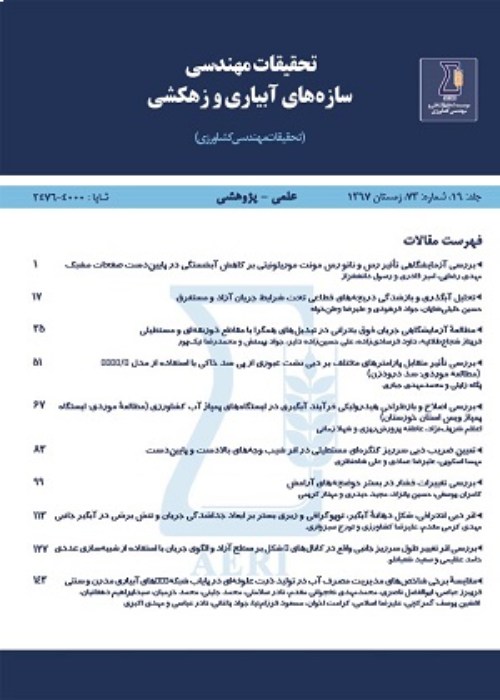Application of Solar Cells on the Lake of Dams(Case study: Nowruzlu diversion dam)
Iran is a land of low rainfall and due to the consequences of climate change and the existence of drought, water loss should be prevented in any way to eliminate water shortage in the country. In the province of West Azerbaijan, a large amount of water is lost every year due to evaporation.Solar energy is known as free and clean energy and even the main source of other types of energy on the earth. The scarcity of fossil fuel, as well as non-uniform distribution of this kinds of energy source in the work, motivate humans to find other types of energy especially clean and sustainable solar energy. Nowadays, the rising earth population and impacts of fossil fuel on the environment leads to accelerate the construction of solar power stations (Turki and Abedi, 2012). Owing to the location of Iran in suitable latitude and altitude, the country has a sunny and dry climate. Therefore, the significant magnitude of The sun's radiant energy reaches the earth's surface. On the other hand, the hot and dry climate of Iran makes high evaporation of water from reservoirs of dams. Covering the surface of freshwater reservoirs with physically thin covers could prevent or reduce the evaporation rate of water. Soltani et al., (2015) reported that water evaporation in aquatic environments could be reduced up to 10% in the presence of the planet. Rezzade et al., (2017) informed that scattering of colored floating balls could prevent evaporation rate from medium to small reservoirs up to 71.5%. Based on their results, the white color balls are more effective than the dark colors such as black in control of evaporation under similar conditions. One of the common means to cover the surface of reservoirs large dam in order to reduce evaporation of water is to use solar panels.
In this study, the reduction of evaporation from the Nowruzlu diversion dam was investigated by using solar panels. This high diversion dam is located in the northwest of Iran, province of West Azerbaijan. The dam is constructed to divert the resealed water from Boukan earth dam to supply agricultural demands left side intake and domestic, industrial and agricultural demands by right side intake. The height of the dam is about 10 meters, the lake area is 0.2 km2, and the volume of water is more than 14 MCM. The object of this method is not only to reduce evaporation from the reservoir of the dam but also to produce clean solar energy for the domestic energy supply. For this purpose, the actual evaporation of the dam lake water was estimated using the data of Noruzlu dam climatology station. With PVsyst software, the amount of solar energy load in the Norozlo dam range was extracted. Finally, the project was economically evaluated and its profitability was analyzed. In this research, we used recorded evaporation data from the local synoptic station located in a dam site based on a standard A class pan. The solar energy potential was estimated by using the photovoltage software PVSYST model. The software provides an effective tool to simulate and calculate the distribution of energies throughout the year in any region on the earth. The output of the software is categorized in three was as follows based on the software documents: • The total energy production [MWh/y] is essential for the evaluation of the PV system’s profitability. • The Performance Ratio (PR [%]) describes the quality of the system itself.• The specific energy [kWh/kWp] is an indicator of production based on the available irradiation (location and orientation).
The numerical analysis to evaluate installation circumstances for solar panels revealed that, by 36o inclination, 2 kw/m2 energy would be produced. In order to supply domestic requirements of 1000 houses, 2568 m2covering of lake surface will be sufficient. Hence, via the mentioned states, 2Mw electricity will be produced, in another word, the annually produced energy could be more than 730 Mw. The results showed that according to economic estimates, the average cost for self-sufficiency in electricity consumption in 5 villages (each of them with 200 houses) around the dam is about 37,680 billion Iranian rials (IRR). By calculating the revenue from the reduction of evaporation and electricity generation, the return on investment of this technology will be compensated in 5.7 years.
- حق عضویت دریافتی صرف حمایت از نشریات عضو و نگهداری، تکمیل و توسعه مگیران میشود.
- پرداخت حق اشتراک و دانلود مقالات اجازه بازنشر آن در سایر رسانههای چاپی و دیجیتال را به کاربر نمیدهد.


